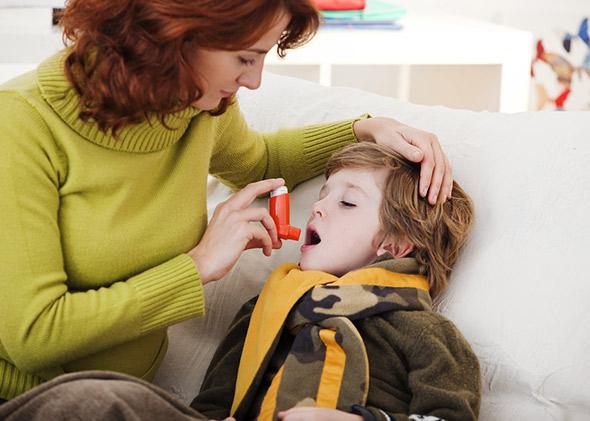Forget the polar bears and melting ice caps. Let’s talk about our children and the elderly.
That was the not-so-subtle message the White House delivered to its allies during the rollout of the Environmental Protection Agency’s historic new climate initiative. President Obama set the table for reframing the debate Friday when he broke with tradition and left the White House to film his weekly address at the Children’s National Medical Center. The backdrop of white lab coats and medical equipment was impossible to miss as the president touted the forthcoming proposal to curb carbon emissions from U.S. power plants. Three days later Obama opted to sit out of the formal unveiling of the draft rule at EPA’s headquarters in D.C. on Monday morning, and instead took part in a conference call that afternoon hosted by the American Lung Association.
“This is something that is important for all of us as parents, as grandparents, and as citizens,” Obama told health professionals and public health advocates on the call. “As a parent who cares about the health of our families and who also wants to make sure future generations can enjoy this beautiful blue ball in the middle of space we are part of … I’m asking people to build momentum for these plans.”
The think-of-the-children appeal is far from new. Obama and his allies have long warned that the nation must act now for the sake of future generations. The change, however, is that the White House is now doing its best to give the present tense top-billing, a sales pitch that lines up squarely with a recent National Climate Assessment that found that impacts of climate change are already being felt by Americans.
The newfound frame was again difficult to miss, when the EPA on Monday released estimates suggesting that the new regulations would prevent up to 4,000 premature deaths and 100,000 asthma attacks in the first year alone, numbers that would climb by about 50 percent by 2030. All told, the rules would mean as many as 2,800 fewer hospital admissions a year for Americans, the agency estimated, and 4,900 fewer missed days of school and work.
The public-health pitch involves a bit of sleight of hand, however. Those near-term health benefits aren’t directly tied to the carbon emissions that contribute to global warming, but instead would result largely from curbing the release of more conventional pollutants—mercury and sulfur dioxide, among them—that billow out of coal plant smokestacks along with the CO2. But ancillary benefits are still benefits, and the White House has a good reason to hype them given that the legal rationale for the new regulations is rooted in the Clean Air Act, which gave the EPA the authority to regulate pollutants that “endanger public health and welfare.”
The more immediate question: Will the PR plan work?
The climate crowd has good reason to believe it will. A 2012 research report from Yale University’s Project on Climate Change Communication found that placing the conversation within a public-health frame was more likely “to elicit emotional reactions consistent with support for climate change mitigation and adaptation” than a traditional environmental frame, or even one focused on national security. More importantly was whom the health pitch spoke to loudest: Americans who to varying degrees haven’t made up their minds about just how pressing a threat man-made climate change is.
Yale researchers have identified what they call “Global Warming’s Six Americas.” The six groups run the spectrum from the Alarmed (those who are convinced of the urgent need to fight man-made climate change) to the Dismissive (those who think of global warming as a hoax or conspiracy). There’s little need to appeal to either of the groups on the ends—the Alarmed are already on board; the Dismissives never will be—but the middle of the spectrum is up for grabs, the research suggests. It’s there where the advocacy battle will be won or lost, and fortunately for the White House it is also there where respondents proved particularly receptive to a health-heavy frame.
In hindsight that finding seems almost obvious, says Anthony Leiserowitz, the director of the Yale center who was involved in the research. “No one is out there arguing against better human health,” he says. “Conservatives like clean air as much as liberals do, so it’s not an issue that forces people into their respective ideological corners.”
Still, while recent polls are trending in the climate crowd’s favor, it’s far too early to declare political victory, and not only because the EPA’s draft rules are still years from being enacted. “The messenger often matters more than the message,” says Leiserowitz. And right now, the messengers are Obama and his EPA—both of which are familiar targets for climate skeptics and their political allies. “When we have the medical profession making the case on its own,” predicts Leiserowitz, “that’s when we’ll really start to see the debate change.”
